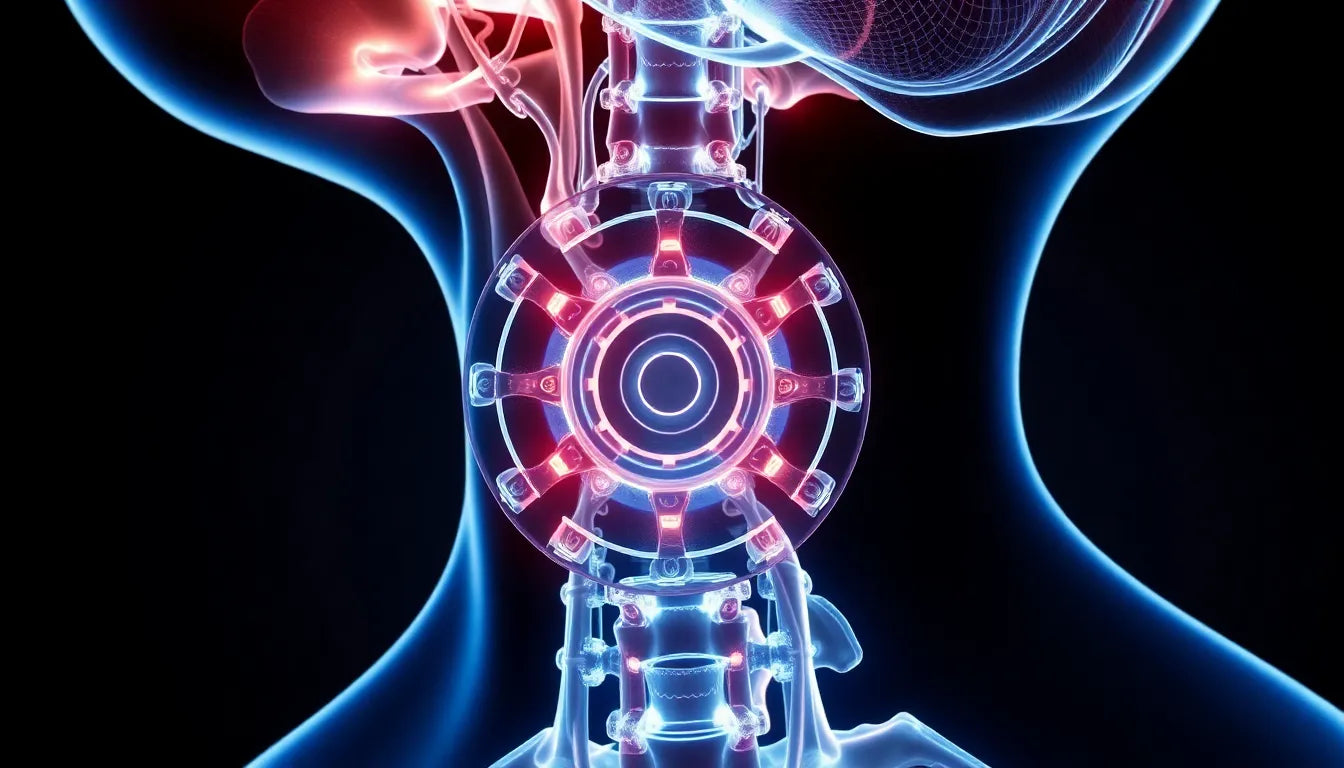Herniated disc surgery can be a pivotal step toward regaining a pain-free and active lifestyle. A herniated disc occurs when the soft, gel-like center of a spinal disc pushes through a crack in the tougher exterior casing. This can lead to discomfort and pain, impacting daily activities and overall quality of life. For many, non-surgical treatments such as physical therapy and medication are sufficient to manage symptoms. However, when these methods fail to provide relief, surgical intervention may become a necessary path to recovery.
Understanding herniated disc surgery
Surgical procedures for herniated discs are designed to relieve pressure on spinal nerves and alleviate the associated pain and discomfort. The goal is to restore normal function and improve the patient's quality of life. It's crucial for individuals considering this option to understand the various surgical techniques available and what to expect in terms of recovery. This knowledge empowers patients to make informed decisions alongside their healthcare providers.
Common symptoms and when to consider surgery
Symptoms of a herniated disc can vary widely but often include severe pain, weakness, or numbness in the affected area. In some cases, these symptoms can become debilitating, interfering with basic activities such as walking, sitting, or even sleeping. When conservative treatments such as rest, physical therapy, or medication do not alleviate these symptoms, surgery may be considered. The decision to undergo surgery is generally based on the severity of symptoms and their impact on daily life.
Ultimately, the choice to pursue herniated disc surgery is a personal one, often made after careful consultation with a medical professional. Understanding the potential benefits, risks, and recovery expectations is essential for anyone considering this path to recovery.
Types of herniated disc surgeries
When conservative treatments for a herniated disc fail to provide relief, several surgical options are available, each tailored to specific conditions and patient needs. Understanding these options can help patients and their healthcare providers make informed decisions about the best path forward.
Discectomy and microdiscectomy
Discectomy is one of the most common surgical procedures for treating herniated discs, particularly in the lumbar region. This surgery involves removing the portion of the disc that is pressing on a nerve. A microdiscectomy is a minimally invasive variation that uses smaller incisions and specialized tools, allowing for a quicker recovery time and less postoperative discomfort. Patients often experience significant relief from nerve pain shortly after the procedure.
Endoscopic spine surgery
Endoscopic spine surgery represents a less invasive approach, using an endoscope—a thin, flexible tube with a camera and light—to guide the surgeon. This technique requires only a small incision, reducing tissue damage and promoting faster recovery. The precision of endoscopic methods makes them an attractive option for patients seeking minimal disruption to their daily lives.
Laminotomy and laminectomy
In cases where more access to the herniated disc is required, a laminotomy or laminectomy may be performed. These procedures involve removing a portion or the entirety of the vertebral bone, known as the lamina, to relieve pressure on the spinal cord or nerves. While effective, these surgeries are more invasive and typically involve a longer recovery period compared to less invasive techniques.
Spinal fusion
Spinal fusion may be necessary when the entire disc is removed, particularly if it compromises the stability of the spine. This procedure involves fusing two or more vertebrae together using bone grafts or synthetic materials to provide stability. While spinal fusion can effectively alleviate pain and prevent further disc herniation, it usually requires a longer recovery time and rehabilitation.
Artificial disc replacement
For select patients with herniated discs in the lower back, artificial disc replacement offers an alternative to spinal fusion. This procedure involves replacing the damaged disc with an artificial one, maintaining more natural movement in the spine. Candidates for this surgery are carefully selected based on specific criteria, and it is generally recommended for younger patients with minimal degenerative changes.
Laser and endoscopic procedures
Innovative techniques such as Deuk Laser Disc Repair focus on minimizing invasiveness and enhancing recovery speed. These procedures use laser technology to precisely target and remove herniated disc material, often resulting in very rapid recovery and minimal postoperative complications. However, these techniques are not yet widely available and may be considered as alternatives to traditional surgical methods.
Procedure and recovery
The choice of surgical procedure significantly influences the recovery process. Minimally invasive surgeries, like microdiscectomy and endoscopic techniques, typically allow patients to return to normal activities within 1 to 3 weeks. In contrast, more extensive surgeries, such as spinal fusion, may require a recovery period of 6 to 8 weeks or longer.
Preoperative imaging, such as MRI scans, plays a crucial role in diagnosing the extent of disc herniation and planning the surgical approach. Post-surgery, patients are encouraged to engage in physical therapy and adopt lifestyle changes to enhance recovery and prevent future disc issues.
Risks, results, and long-term outlook
Herniated disc surgeries generally boast a high success rate, particularly for alleviating symptoms caused by nerve compression. However, as with any surgical procedure, there are risks involved, including infection, bleeding, and potential nerve damage. Recurrence of disc herniation, although rare, is another consideration.
Long-term success often hinges on the patient's commitment to post-surgical care and lifestyle modifications. Maintaining a healthy weight, engaging in regular exercise, and practicing proper ergonomics can significantly reduce the risk of future disc problems and enhance overall spinal health.
When surgery is recommended for a herniated disc
Herniated disc surgery is generally recommended when symptoms become severe and disabling, significantly impacting daily activities and quality of life. Patients who experience persistent pain, weakness, or numbness that does not respond to conservative treatments such as physical therapy, medication, or lifestyle modifications might be candidates for surgical intervention. The decision to proceed with surgery is typically made in collaboration with a healthcare provider, considering the patient's specific condition, overall health, and personal preferences.
Comparative table of surgical options
| Type of Surgery | Procedure | Recovery Time | Suitability |
|---|---|---|---|
| Discectomy / Microdiscectomy | Removal of herniated disc portion | 1-3 weeks | Common for lumbar spine issues |
| Endoscopic Spine Surgery | Use of endoscope for minimal incision | 1-3 weeks | Patients seeking less invasive options |
| Laminotomy / Laminectomy | Removal of vertebral bone to access disc | 4-6 weeks | Cases needing more access to disc |
| Spinal Fusion | Fusing vertebrae for stability | 6-8 weeks or more | When entire disc is removed |
| Artificial Disc Replacement | Replacing damaged disc with artificial one | 4-6 weeks | Selected cases in lower back |
| Laser/Endoscopic Procedures | Laser technology for disc removal | 1-2 weeks | Minimally invasive, rapid recovery |
Conclusion
Understanding the various surgical options for herniated disc treatment is crucial for patients considering this path to recovery. Each procedure offers different benefits and recovery timelines, allowing patients and their healthcare providers to choose the most appropriate approach based on individual needs and conditions. By being informed about the potential outcomes and post-surgical care requirements, patients can make empowered decisions that support their journey toward a pain-free life.
Frequently Asked Questions
What are the signs that I might need herniated disc surgery?
Signs that you might need herniated disc surgery include severe pain, weakness, or numbness that does not improve with conservative treatment methods like physical therapy or medication.
How long is the recovery period after surgery?
Recovery periods vary based on the type of surgery. Minimally invasive procedures often allow patients to return to normal activities within 1-3 weeks, while more extensive surgeries, such as spinal fusion, may require 6-8 weeks or longer.
What are the risks associated with herniated disc surgery?
Risks can include infection, bleeding, nerve damage, and the recurrence of herniation. However, these complications are relatively rare, and most patients experience significant symptom relief.
Can lifestyle changes help prevent future herniated discs?
Yes, adopting lifestyle changes such as maintaining a healthy weight, engaging in regular exercise, and practicing proper ergonomics can significantly reduce the risk of future herniated discs and improve overall spinal health.
Sources
- Healthline. "Herniated Disc Surgery: Overview, Types, and Recovery."
- Mayo Clinic. "Discectomy: Procedure and Recovery."
- Medical News Today. "Herniated Disc Surgery: Techniques and Considerations."
- HSS Hospital for Special Surgery. "Understanding Herniated Disc Surgery."
- WebMD. "Herniated Disc Surgery: What You Need to Know."
- Deuk Spine. "Laser Spine Surgery: A Minimally Invasive Approach."
- Spine-health. "Back Surgery: When Is It Necessary?"



